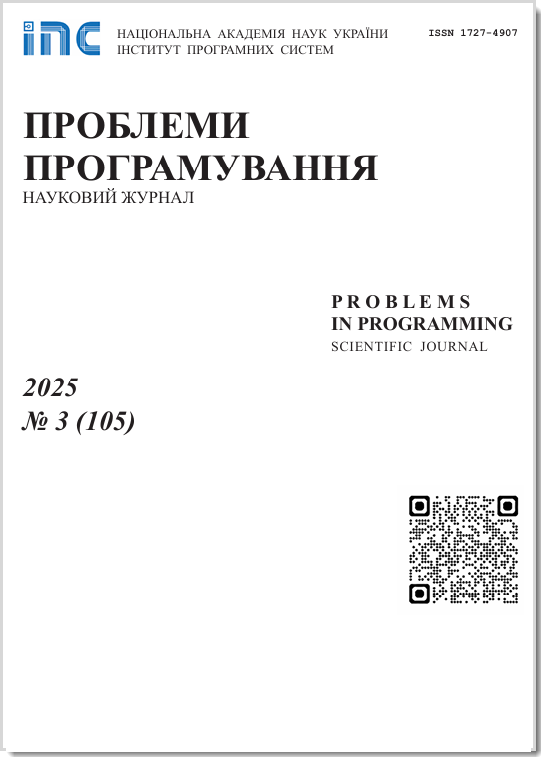Comparative analysis of height-based vegetation segmentation methods: evaluating efficiency and accuracy
Abstract
Height-based vector vegetation segmentation is one of the critical aspects of spatial analysis. This segmented data is used in radio propagation modeling, environmental monitoring, and vegetation mapping. Many studies on vector vegetation segmentation focus on delineating individual tree crowns, allowing detailed data sets to be obtained. However, the high level of detail results in a substantial data volume, making it impractical to use these datasets over large areas, such as an entire country. Segmentation of large vector data sets remains a significant challenge in geospatial data creation. In our study, we developed three different segmentation methods: hexagon segmentation, convolution segmentation, and random points method. A test data fragment was processed to compare the proposed methods and accuracy and volume metrics were calculated.
Prombles in programming 2024; 2-3: 313-318
Keywords
Full Text:
PDFReferences
R. Douss, I.R Farah, Extraction of individual trees based on Canopy Height Model to monitor the state of the forest. Trees, Forests and People 8, 2022. CrossRef
P. Hofmann, D. Tiede,Image segmentation based on hexagonal sampling grids, South‐Eastern European Journal of Earth Observation and Geomatics 3, 2014, pp. 173-177.
M.K. Jakubowski, W. Li, Q. Guo, M. Kelly, Delineating individual trees from lidar data: A comparison of vector- and raster-based segmentation approaches. Remote Sensing 5(9), 2013, pp. 4163-4186. CrossRef
W. Li, Z. Niu, S. Gao, N. Huang, H. Chen, Correlating the horizontal and vertical distribution of LiDAR point clouds with components of biomass in a Picea crassifolia forest. Forests 5(8), 2014, pp. 1910-1930. CrossRef
E. Lindberg, J. Holmgren, H. Olsson, Classification of tree species classes in a hemi-boreal forest from multispectral airborne laser scanning data using a mini raster cell method. International Journal of Applied Earth Observation and Geoinformation 100, 2021. CrossRef
S. Liu, et al, The overlooked contribution of trees outside forests to tree cover and woody biomass across Europe. Science Advances 9(37), 2023. CrossRef
L. Ma, Y. Gao, T. Fu, L. Cheng, Z. Chen, M. Li, Estimation of Ground PM2.5 Concentrations using a DEMassisted Information Diffusion Algorithm: A Case Study in China. Scientific Reports 7(1), 2017. CrossRef
J.N. Mueller, J.N. Corcoran, A Random Point Initialization Approach to Image Segmentation with Variational Level-sets. 2021.
R. Weibel, Using Vector and RasterBased Techniques in Categorical Map Generalization, 1999.
DOI: https://doi.org/10.15407/pp2024.02-03.313
Refbacks
- There are currently no refbacks.









